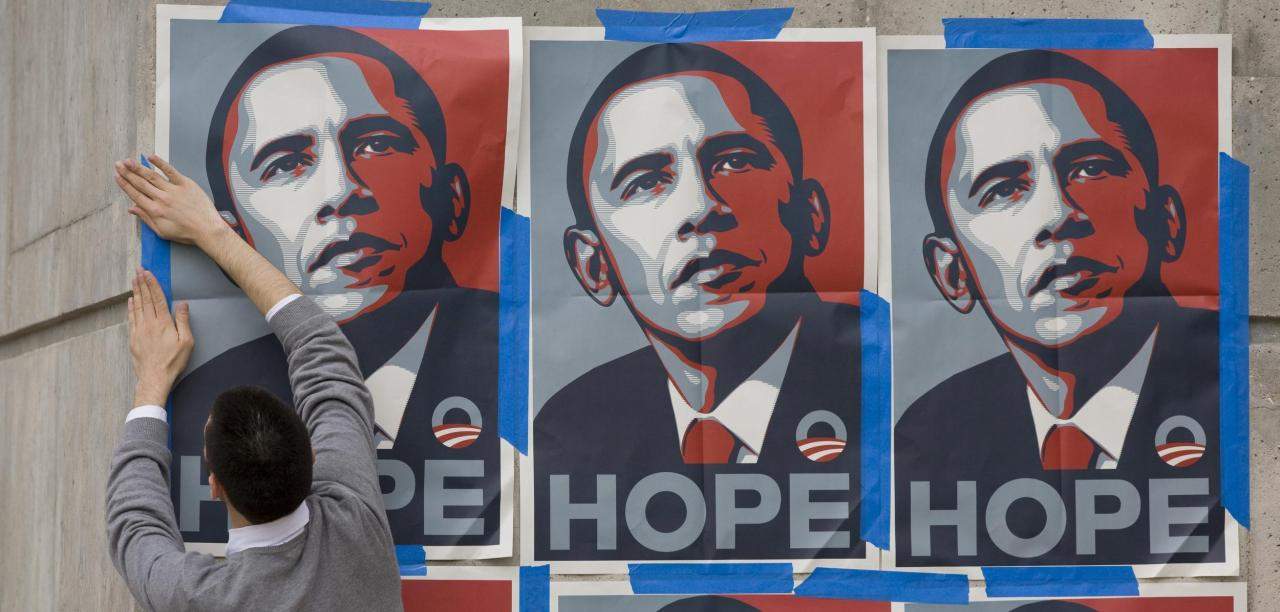Genoa, street art arrives at Palazzo Ducale: there's an exhibition by Obey, a protagonist of the world scene
The famous American street artist Obey (Frank Shepard Fairey; Charleson, 1970) will be the star of the upcoming exhibition at Palazzo Ducale in Genoa: Obey fidelity. The art of Shepard Fairey (this is the title of the exhibition, curated by Gianluca Marziani and Stefano Antonelli) will open to the public from July 4 to November 1, 2020. The path is intended to be a visual journey that crosses four salient points in the artist’s poetics: the onna, the environment, peace, and culture, all with the intention of recreating an ideal walk through the metropolitan night.
Four themes to tell the story of Obey’s universe, deeply based on early 20th century Soviet and Futurist graphics, Latin American wall paintings and Italian muralism. Obey creates screaming images, simplified in color palette, paying attention to the balance of weights between text and image. All to convey militant messages and pacifist visions, reflecting on humanitarian issues and social utopias. “Its pacifist and ecologist message,” explains Gianluca Marziani, “makes us little soldiers of a new militancy, made of ethical spaces of confrontation, new models of living, healthy and conscious actions.”
And the medium is the vehicle that underscores the scope of his message: “the formats,” says Stefano Antonelli, “tend to gigantism when the chosen context is the street, they diminish in the case of objects functional to the project (album covers, skateboards, posters and objects...), in both cases Obey translates the old stylistic features of muralist propaganda into the present. He creates hot paper prints, sounding like Angela Davis’ cathartic scream or Barack Obama’s democratic hope, with their silhouettes capturing the right frequencies and taking the media stage of the new millennium.”
Among the works on display are some iconic images, such as the celebrated Hope in which Obey depicted future U.S. President Barak Obama in 2008, a work executed not on commission but on the basis of spontaneous support for the political figure of Barak Obama. Obama himself greatly appreciated the work, so much so that once elected he decided to write to the artist, “I am privileged to be a part of your artwork and I am proud to have your support.” The Hope portrait became so famous that it became part of the permanent collection of the National Gallery in Washington and was judged by New Yorker art critic Peter Schjeldahl as “the most effective American political illustration since Uncle Sam.”
On display are silkscreens and lithographs (from private collections) with political and social themes, such as We the People - Defend Dignity, a political graphic in direct response to the xenophobic, racist and anti-immigrant sentiment that characterizes the Trump presidency, and is part of a series of three portraits produced for the We the People campaign published by Amplifier Art on January 21, 2017, to coincide with the Women’s March, the largest single-day protest in U.S. history. There will then be a chance to see the very recent Angel of Hope and Strength, a work in which a nurse with heavenly wings and a torch in her hand evokes doctors and nurses who fought the Covid-19 epidemic. The artwork, to be created in May 2020, is intended to be printed on T-shirts, the sale of which will go to support the activities of the Italian Red Cross.
Finally, the works will include the highly topical Angela Davis, a pivotal figure in the African-American movement of the 1970s, who became one of Obey’s favorite subjects and was chosen as the exhibition’s lead image. Accused of conspiracy, kidnapping and murder following the events of August 7, 1970, when Black Panther activists attempted to free three defendants from a trial (the incident ended in tragedy, with the death of three activists and the judge they had seized), Angela Davis was arrested and tried (and later acquitted, although she had to spend a long time in detention), becoming so popular that she mobilized in her favor a large number of people who gathered in committees and organizations, not only in the United States but also in many other countries. Obey portrayed her several times, and one of these images is in the exhibition, helping to create the myth of an African American woman, a symbol of both feminism and racial equality.
The exhibition is produced and organized by MetaMorfosi in collaboration with Palazzo Ducale Fondazione per la Cultura with the support of the Genoa Chamber of Commerce, sponsored by the City of Genoa and the Region of Liguria.
 |
| Genoa, street art arrives at Palazzo Ducale: there's an exhibition by Obey, a protagonist of the world scene |
Warning: the translation into English of the original Italian article was created using automatic tools. We undertake to review all articles, but we do not guarantee the total absence of inaccuracies in the translation due to the program. You can find the original by clicking on the ITA button. If you find any mistake,please contact us.





























